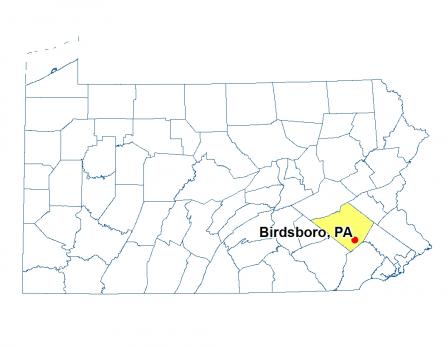Stories of Progress in Achieving Healthy Waters
U.S. EPA Region 3 Water Protection Division
Birdsboro, Pennsylvania • November 23, 2016
The Exeter Township Water Quality Control Plant in Birdsboro made a key process change after attending a course delivered by EPA and PADEP staff on energy efficiency at water and wastewater plants.
The course identified the aeration process as the biggest energy consumer at treatment plants and the best area to look for savings. This process uses the largest motors at the plant, running blowers that pump air into the liquid wastewater.
Applying tips from the training, Dale Miller, an operator at the Exeter plant, manually closed a specific aeration valve to “cut way back” on air supplied to a portion of the treatment process. “We were over-aerated,” said Miller.
EPA and PADEP used “power loggers” to document the actual savings, finding that energy use in the aeration process was cut in half. EPA then connected plant management with the local power company’s energy efficiency consultant to check on incentives for automating the new aeration strategy.
The Exeter plant ultimately invested $230,000 to update and automate the aeration computer control process. Using EPA and PADEP’s initial energy use data, the power company was able to compare the new process with the old and determined that the savings was about 640,000 kilowatt hours or approximately $44,800 annually. In addition, the power company provided a rebate check for $72,000 for the plant’s implementation of energy saving projects –a welcome surprise to the plant. “I never expected to get that amount of money back from our utility,” said Miller.
The payback for the project is estimated at less than four years. Every year thereafter, the project will pay dividends in energy savings, money and process improvements.
Water and wastewater utilities are typically the largest consumers of energy in municipalities, often accounting for 30 to 40 percent of total energy consumed. Implementing energy efficiency measures can significantly reduce operating costs and mitigate the effects of climate change. EPA estimates the process change at the Exeter plant is reducing carbon dioxide emissions by 450 metric tons annually.
The Water Protection Division provides regular training and assistance to help systems find savings.

- Tip Saves Energy, Money for Pennsylvania Plant (PDF)(1 pg, 637 K, 2016-11-23)
